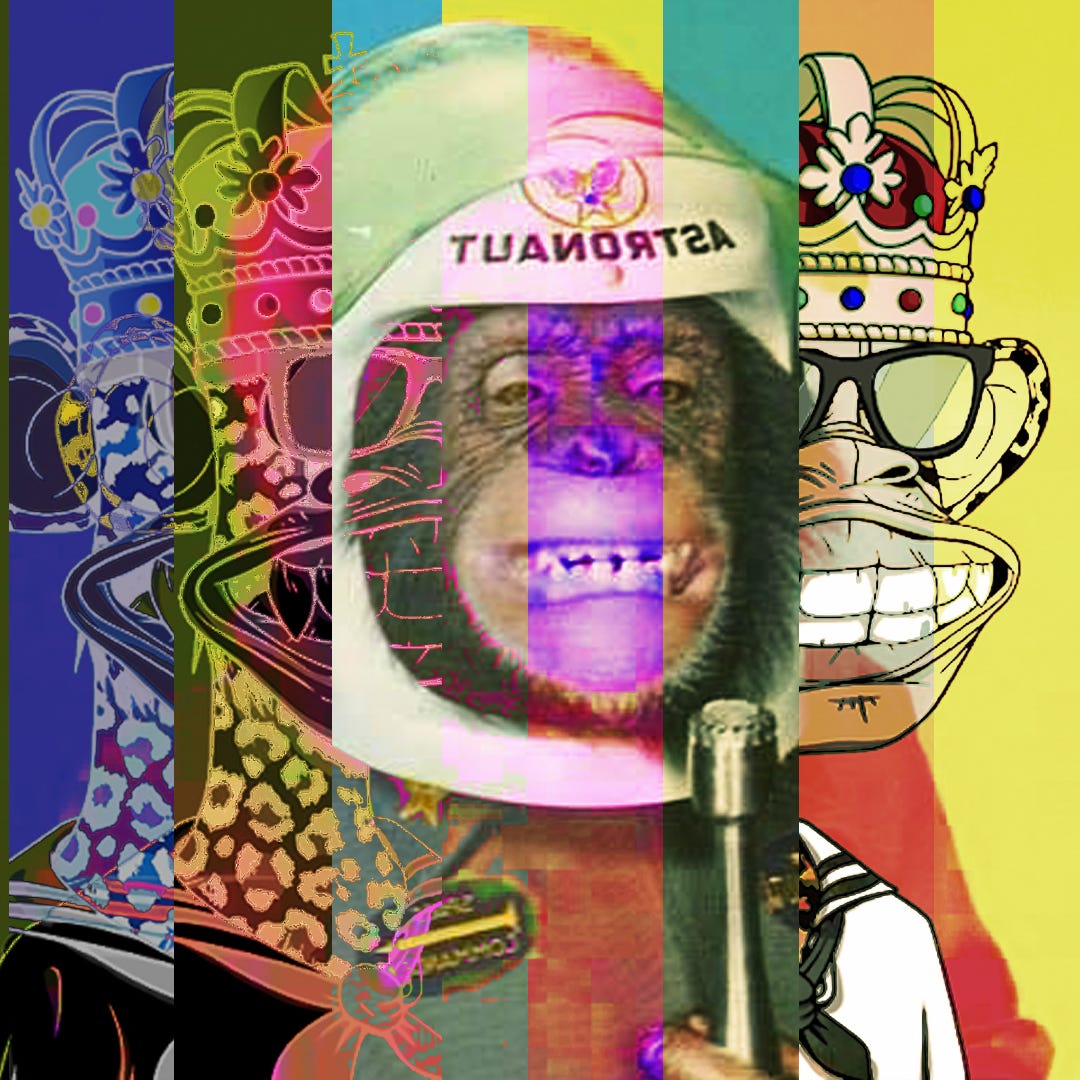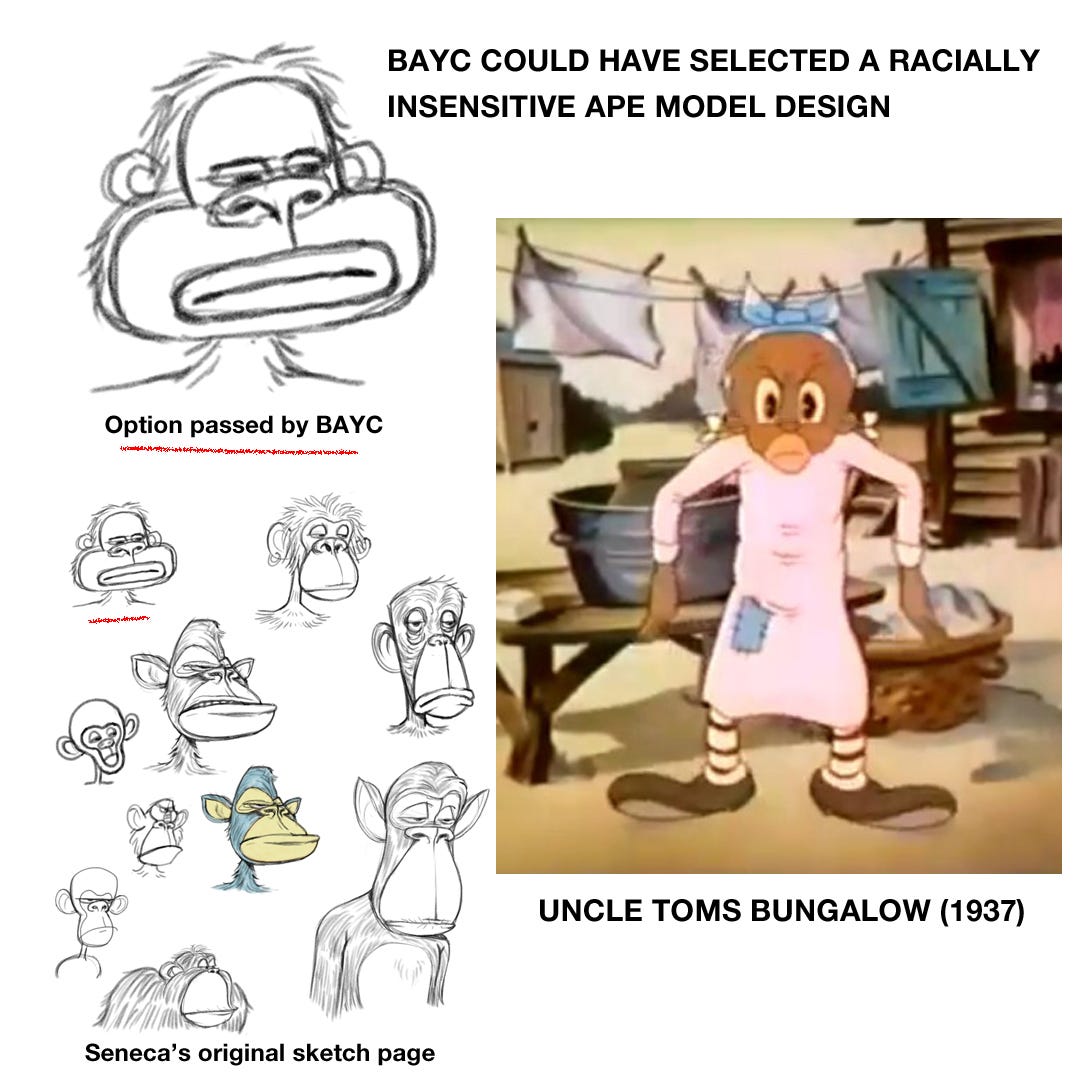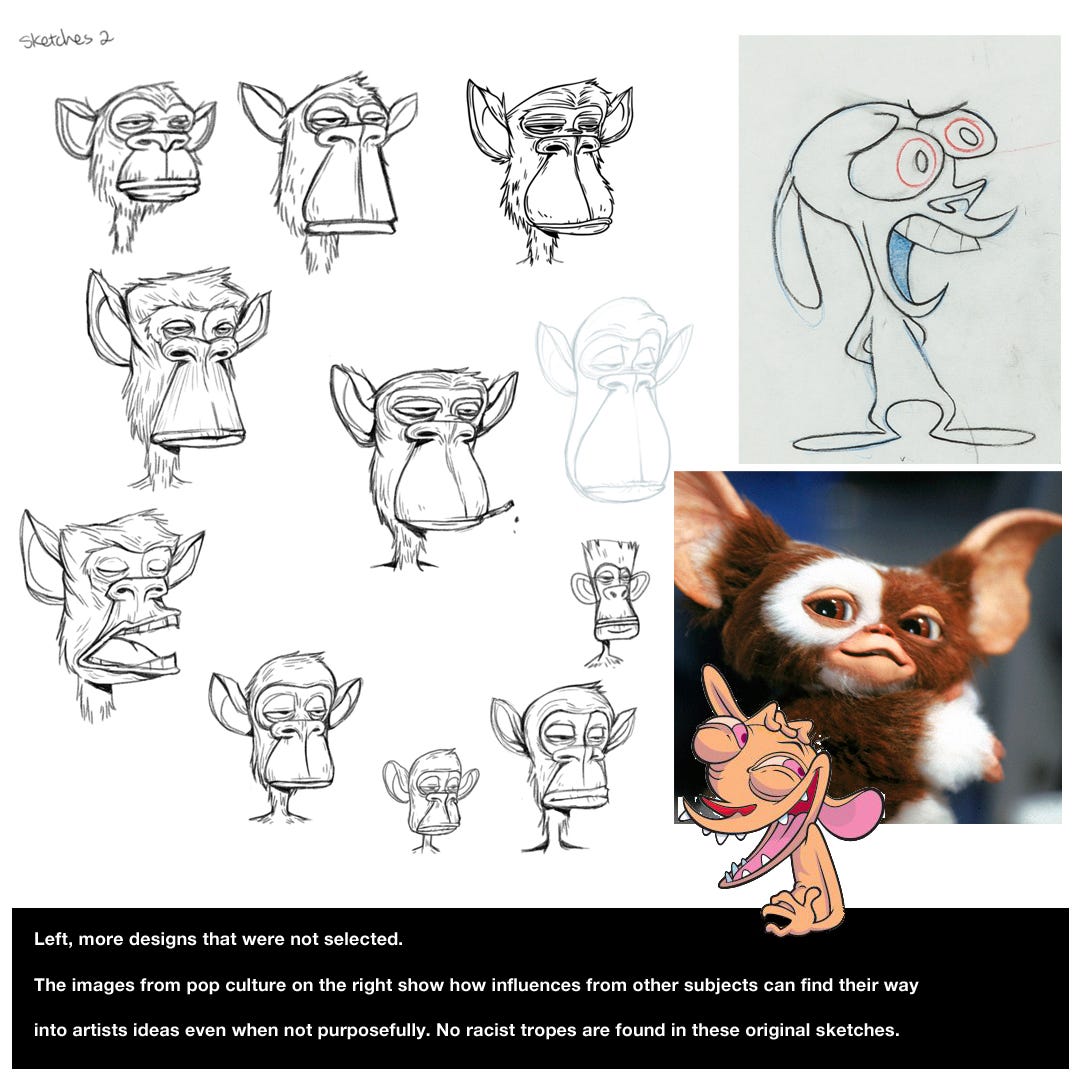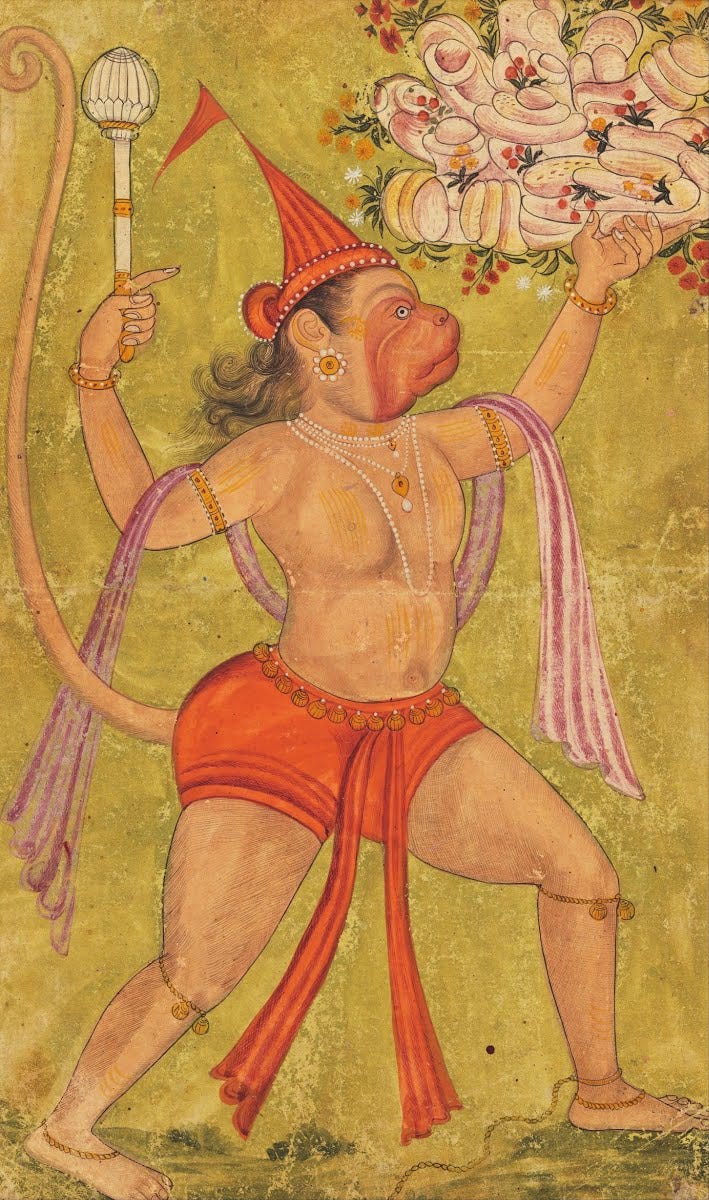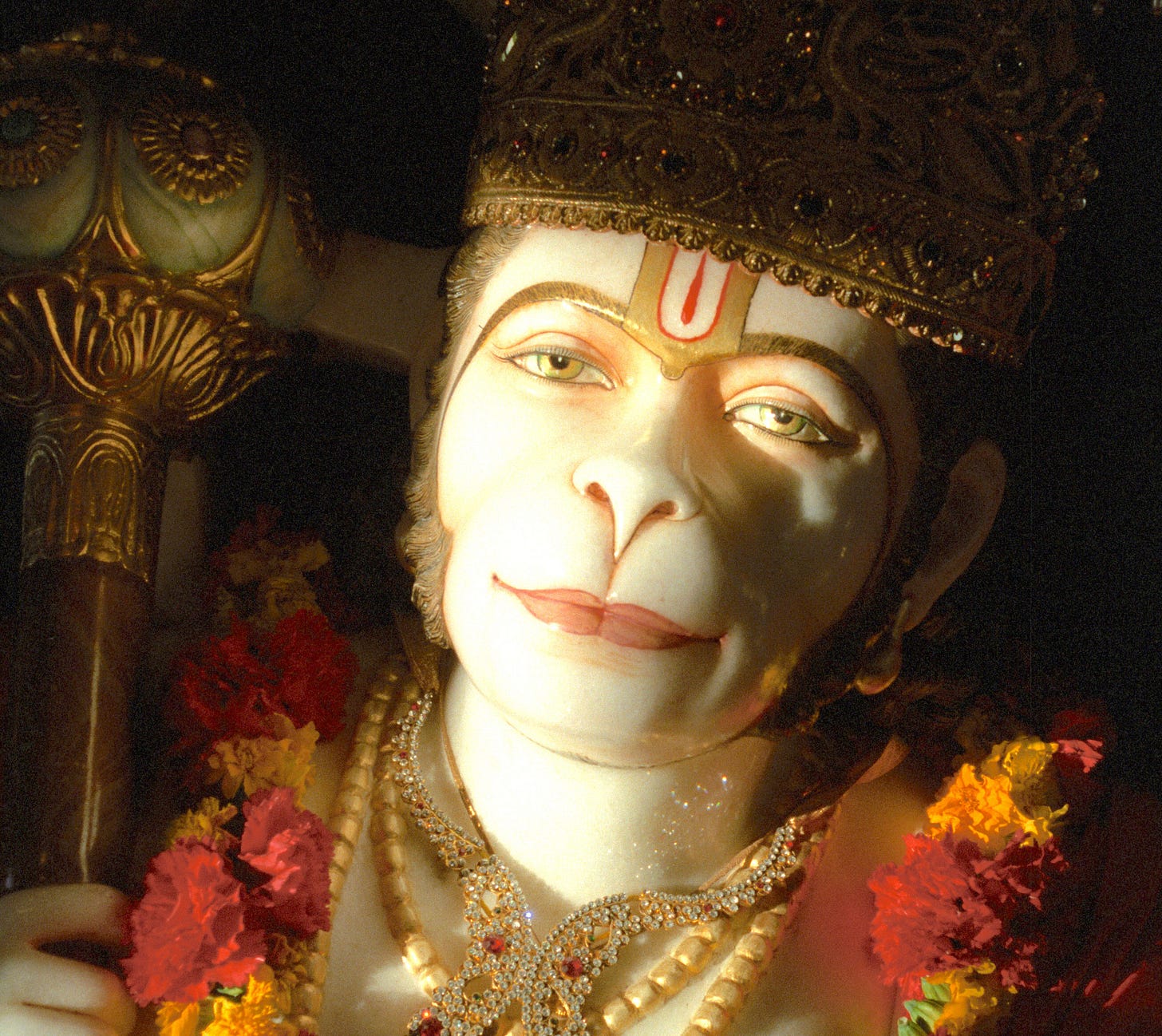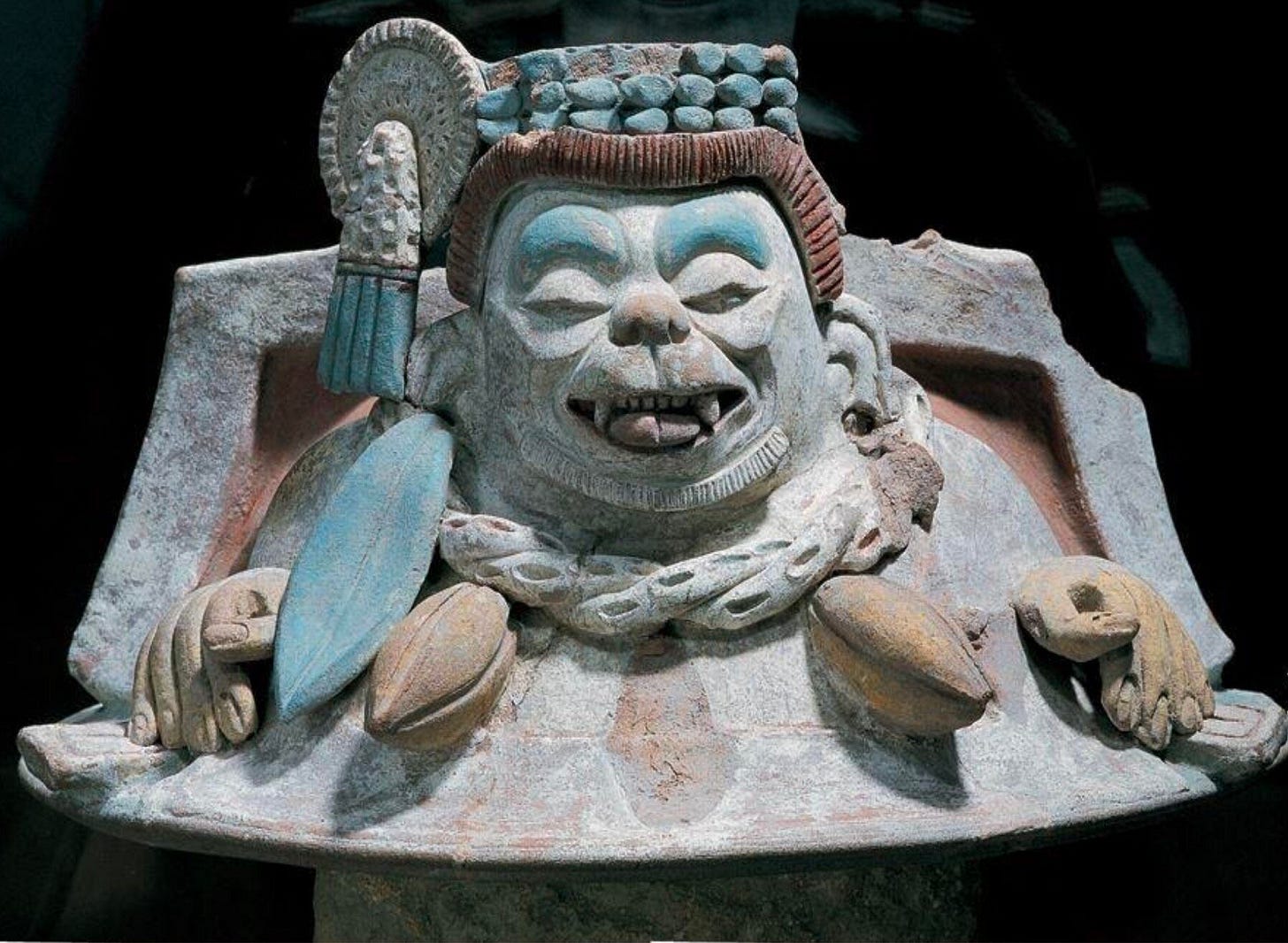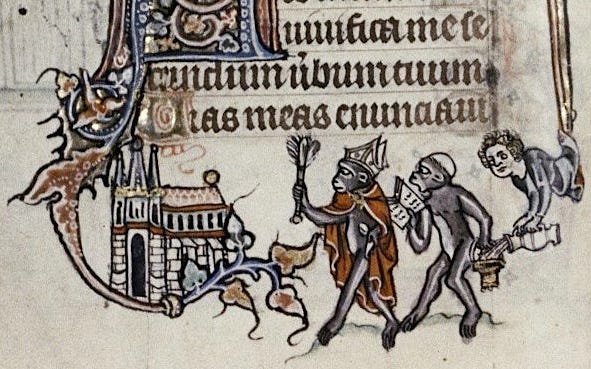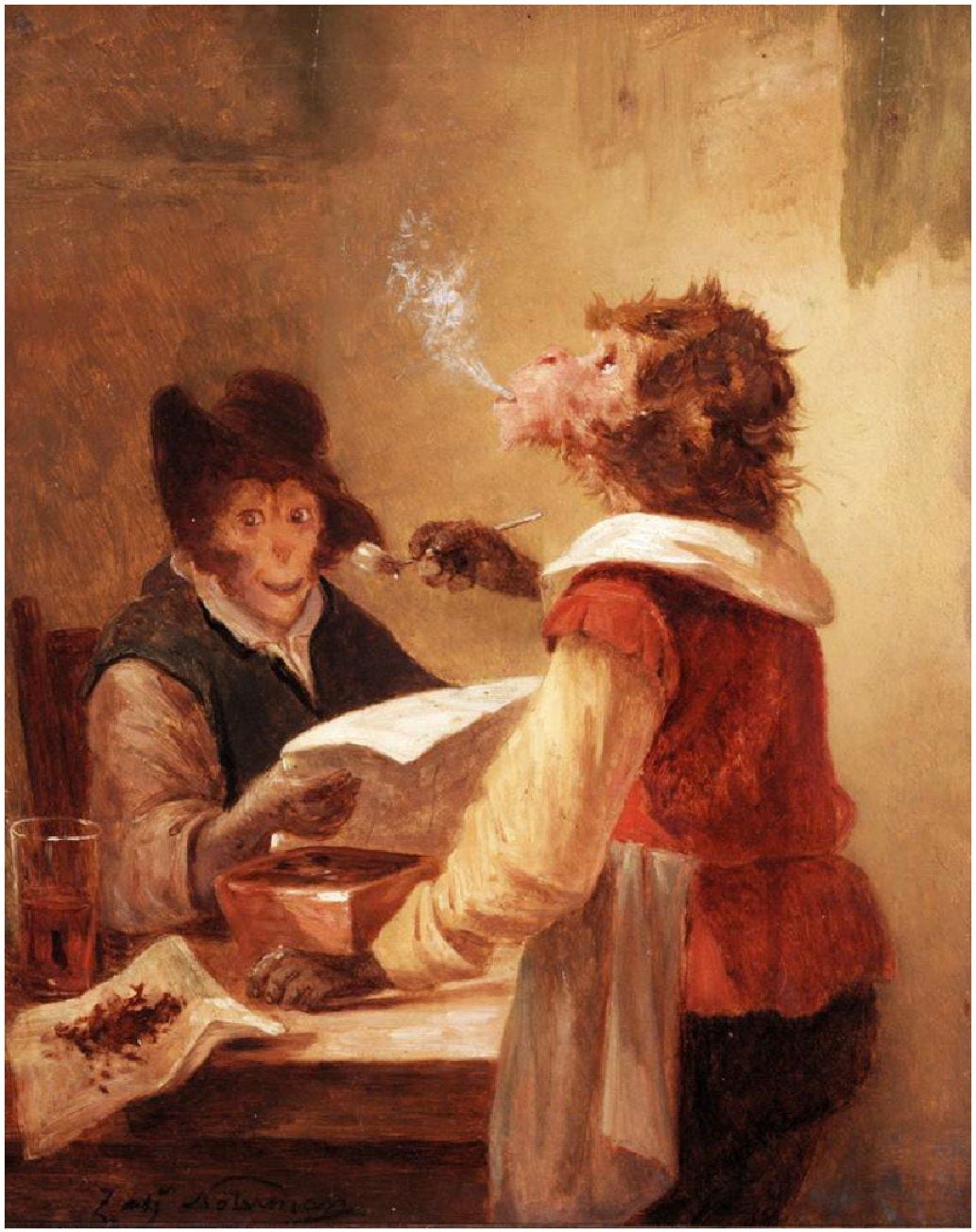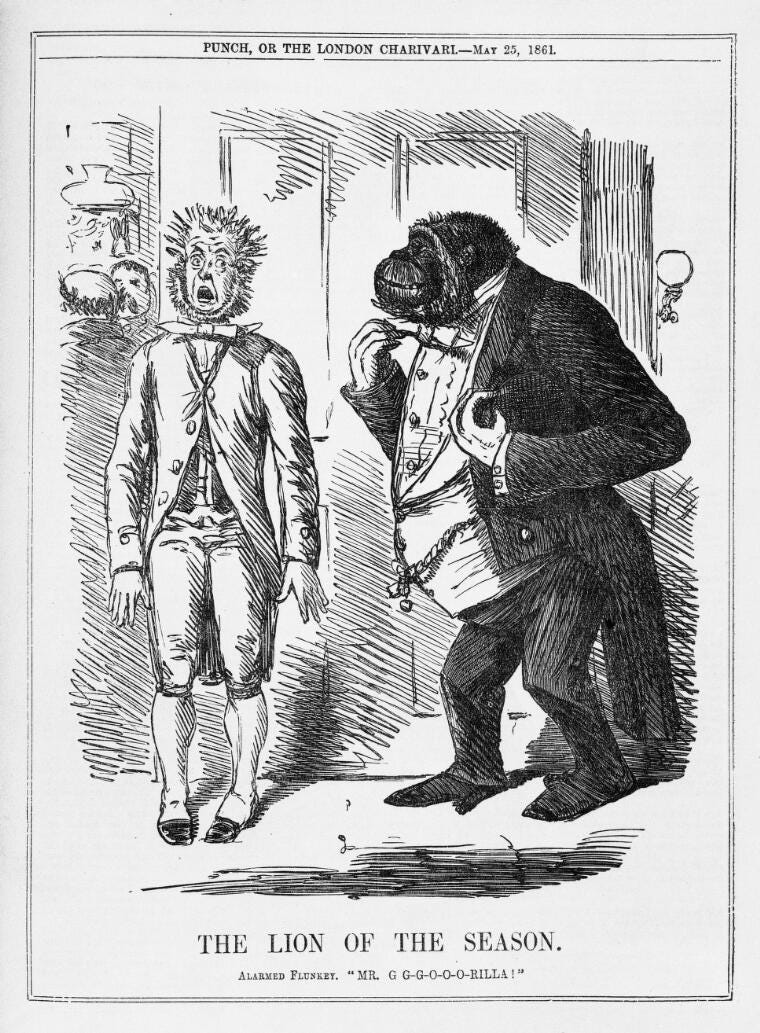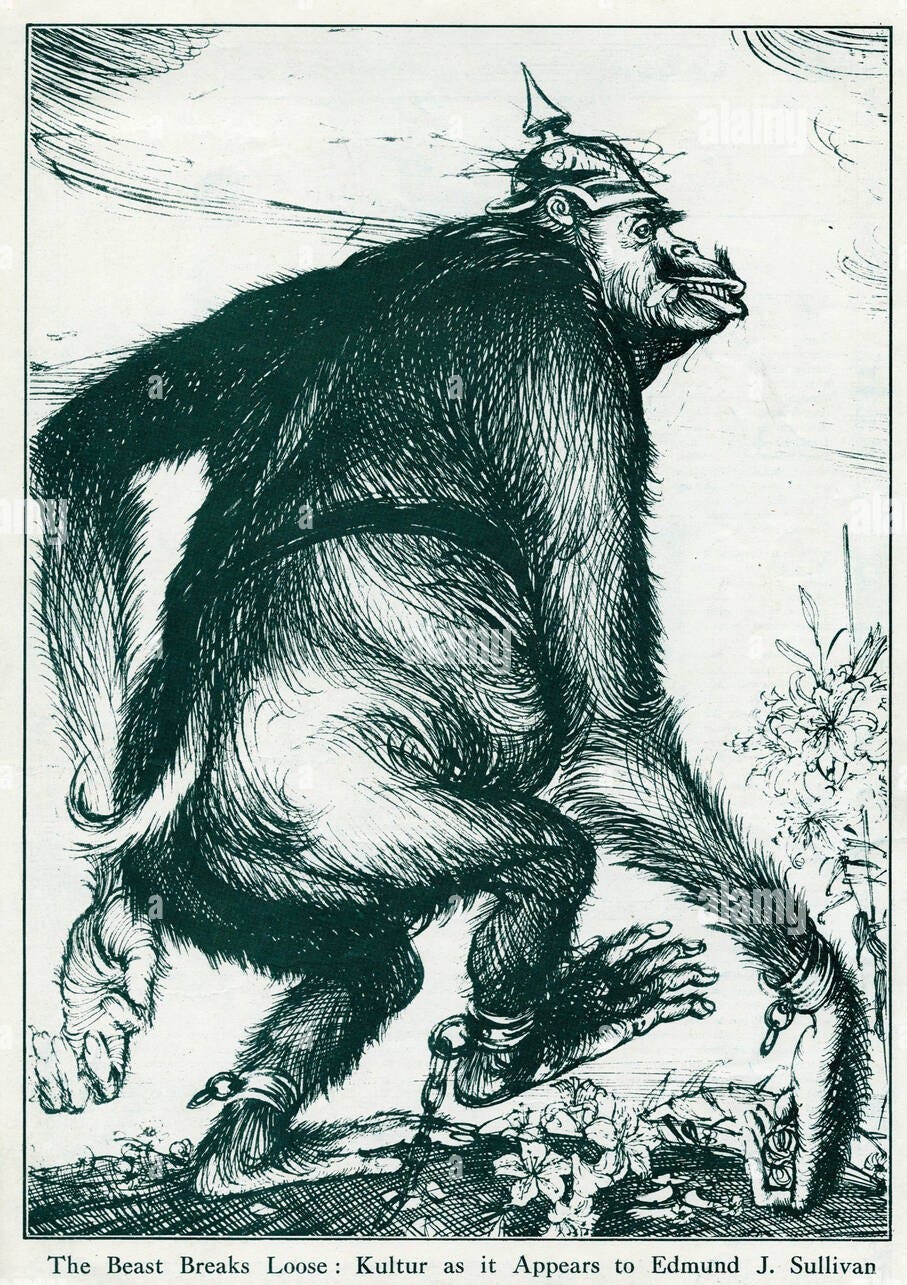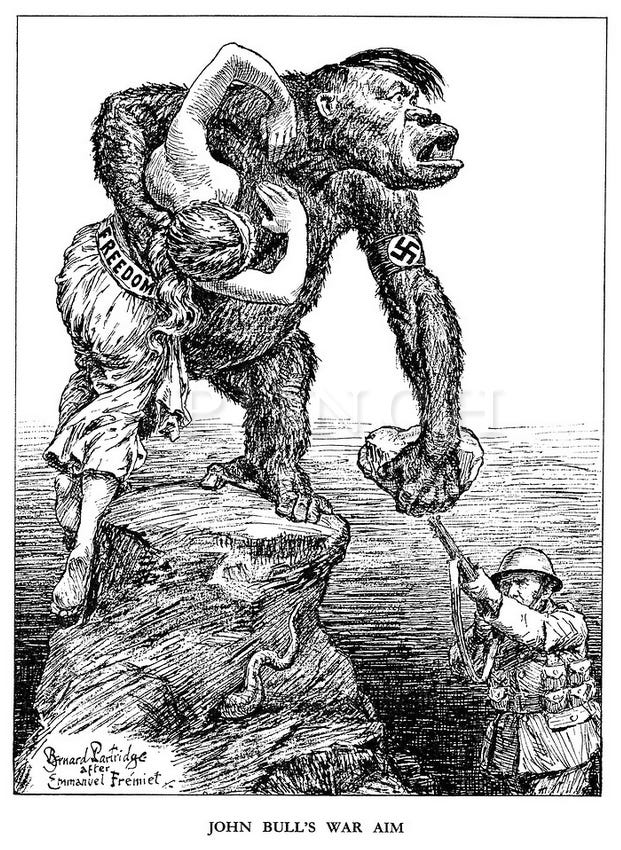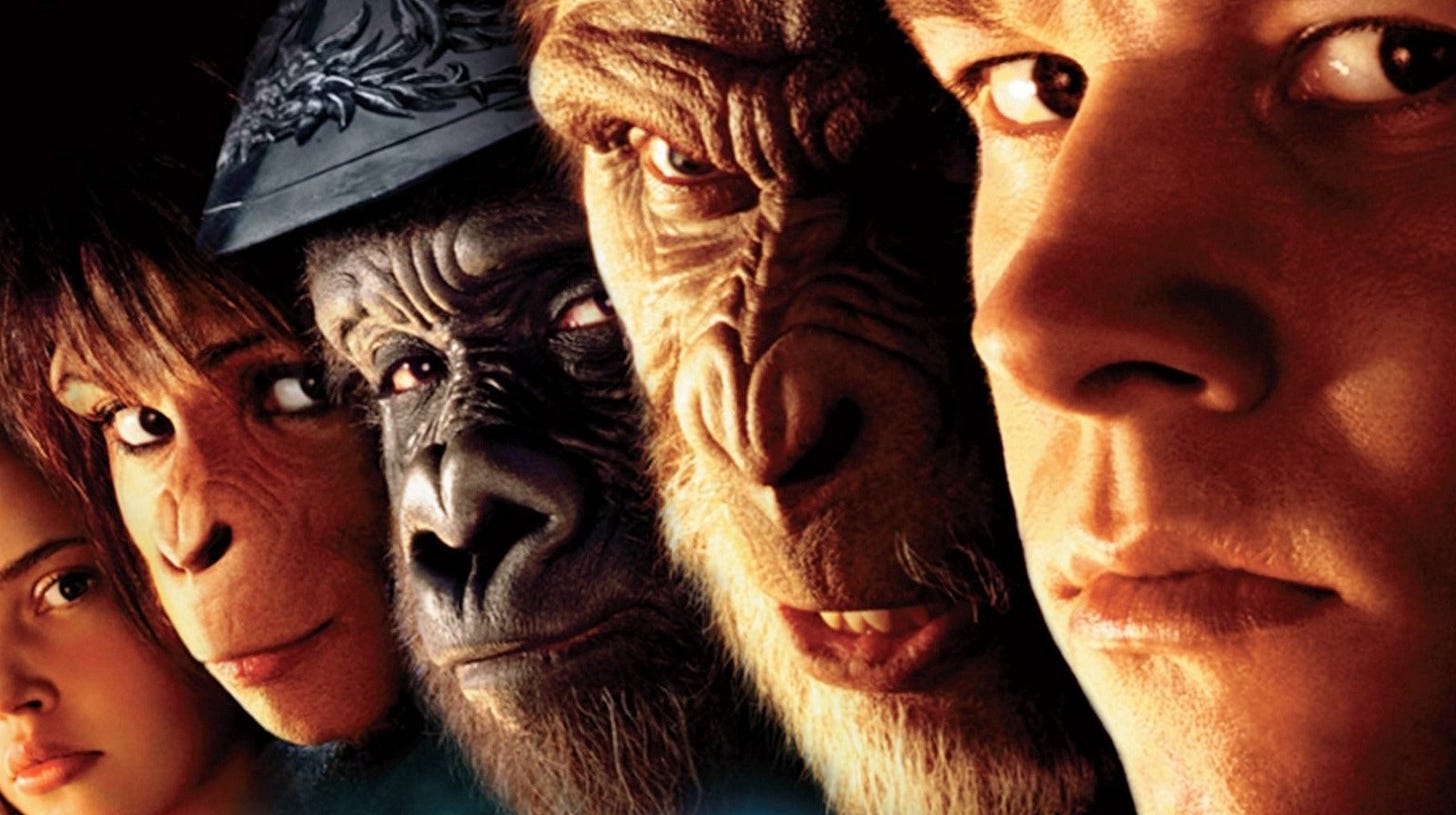Meta of the Apes: An Art Historical Interpretation on Racial Nuance in the BAYC Universe
A survey of primate anthropomorphism, simianization and their Pre-American roots in the context of Bored Ape Yacht Club's aesthetic portrayal
I’m a cultural critic, as a matter of course I make it my business to scrutinize the detritus of art and its intricate processes. Regarding the recent BAYC controversy I have watched the documentaries, read both sides of the dialectic, and could myself advance either without erring too broadly. This article is chiefly about understanding racist signs in culture than it is about attributing racist intent, though clarifying intent remains important because of lapses in knowledge around this topic in Media and Art history, especially in Web3.
SECTION 1.
A proposal exists that the underlying imagery empowering the first generation BAYC character set are anthropomorphized racially insensitive depictions of black stereotypes common to 21st century racial discourse, such having a long and storied international but potent American history. At first glance, to some, this wouldn’t seem unreasonable, for why not assume its truthfulness seeing how racially political and therefore popular (in vulgar parlance) racism as dire social evil is today?
But buzzwords, group-think and fad thought aside, when actually researching how the BAYC designs were developed one finds a set of sketches made by a female Sino American now residing in New York who felt her contributions eclipsed by the franchises moon bound fame. By no impression, and in no sense would I deduce that she is a racist, nor her work to be a product of African American prejudice. None of her original sketches came across as alluding to race generally, nor did racially insensitive depictions, save one, exist without me having to expand contextual boundaries first; this is to say, for an exploratory definition of racial profiling I purposely positioned one of her drawings as though it were intentionally offensive (though it was not to me personally).
SENECA (The Sketches)
In an Instagram post, the artist known as, “All Seeing Seneca” shared that when creating the BAYC designs all creative decision was fulfilled at the behest of Gordon and Gargamel who are two of the founders that some claim are clandestine 4chan trolls who have a nuanced understanding of questionable alt lit and European war history.
In figure 2., we see that an ape design did exist aligning with racially insensitive tropes: having larger lips and a prominent nose with flared nostrils. Yet, this design was not chosen by the founders.
Next, we have more of her designs. I’ve provided images holding faint likenesses to her work as to show how the artistic process may have developed. Notice, lips become minuscule and realistic human likenesses are diminished.
Discussion: The first thing naysayers will think is, “it’s obvious that the founders wouldn’t have chosen a blatantly insensitive design because their task was to obscure such references”. And because this could be true, in the following portion of this investigation titled, Section 2, I will explain with detail how simianization itself does not have to be read as inherently racist. But, before this, below is a self confession from the artist that racism wasn’t at all her intention.
So in seeing that the original sketches were likely not intentionally racist, claims now must depend solely upon either the apes’ attributes being racist (Gold teeth, Prussian helmets), or, be rooted in the claim that racism was perpetrated mistakenly.
SECTION 2.
Provided are foundational ape-imagery allusions in world culture that could have been independently referred to in the BAYC production process. Each one of the sections in bold could serve as prototypes for the original BAYC sketches (Warning, don’t break your keyboard, nor, if you disagree, label me a thought criminal).
1: Ancient depictions of Oriental/Egyptian/Indian/Mayan Ape deities with human attributes (predating modern racism as concept)
Wukong the Monkey King. Background “Sun Wukong is a deity that sits at the intersection of Buddhism, Daoism, and Confucianism.”1
Thoth. “Egyptians venerated the hamadryas baboon as one embodiment of Thoth, god of the moon”. 2 This personification is often depicted with a headdress, has human abilities, secondary forms, and its species was at times mummified.
Hanuman (India) An ancient monkey humanoid deity who is very popular in Indian and all across the Orient. Background
Ancient Mayan monkey like deity of cocoa. Background
2: Ape human hybrids in ancient literature (these also predate modern racism)
This brief survey of prominent ancient thought shows that monkey/ape men/people, and their comparisons predate modern racist concepts. Written between 500BCE-2CE.
The Rámáyan of Válmíki, Ralph T. H. Griffith - translation
Aristotle. & Balme, D. M. (1991). History of animals. book II, chap. 8, Cambridge, Mass : Harvard University Press
Pliny the Elder, Naturalis Historia, in: Mayhoff, K.F.T. (Ed.), Lipsiae, Teubner, book VII, chap. 2, para. 23–27, 1906. He also called them Choromandarum, meaning dance-master.
Narrative of the kerkopes: Pseudo-Apollodorus Bibliotheca 2.6.3
Pausanias, Description of Greece 1. 23. 6 (trans. Jones) (Greek travelogue C2nd A.D.)
3: Singerie beginning in illuminated manuscripts (Monkeys as people, depicted as all races equally)
“Singerie, (French: “monkey trick”) type of humorous picture of monkeys fashionably attired and aping human behaviour” 3
In an open access journal specializing in British Romantic literature, a paper titled, Monkey Business: The Victorian Natural History Museum, Evolution, and the Medieval Manuscript, written by Janine Rogers and John Holmes, when speaking about Singerie in illuminated manuscripts state, “It is a common interpretation of medieval texts to see descriptions of monkeys, apes, and other non-human primates as negative, associating them with the devil, as figures of greed, lasciviousness, and malice.14 But in actuality depictions of marginal monkeys in the middle ages were highly diverse—indeed virtually encyclopedic in their range of ethical presentations, even in a single interpretive space”. (p. 13) Bold mine.
A repository of like images can be found here
4: Physiognomy (Comparing/contrasting humans to apes etc,. by facial features / not race reliant)
"Physiognomy has its roots in antiquity. As early as 500 B.C., Pythagoras was accepting or rejecting students based on how gifted they looked ... Physiognomy—from the ancient Greek, gnomos (character) and physis (nature), hence “the character of one’s nature”— really became popular again in 16th-century Europe, as physicians, philosophers, and scientists searched for tangible, external clues to internal temperaments." 4 Bold mine.
Following are early and later takes on physiognomy. Note how race is not at its center.

The study of facial features and skull shapes was a pseudoscience antecedent and contemporaneous to Darwinism that looked at moral character as defining factor of likeness to beasts. Those who were thieves were linked to monkeys, those who were gluttonous, swine, etc. This idea was an equal opportunity judge and didn’t rely upon racist stereotypes per se.
Head size and angle studies (ape and man seperate catagories)

Racist images did begin to become popular in the early 19th century (1800’s), but the above isn’t one of them. Presented is a comparison where on both extremes exist unnatural exaggerations of the skull, this image does not show a spectrum of ape to man as racists later wished. In chapter 3 of the book, On the connexion between the science of anatomy and the arts of drawing, painting, statuary 5 Petrus Camper clearly states, "The striking resemblance between the race of Monkies and of Blacks, particularly upon a superficial view, has induced some philosophers to conjecture that the race of blacks originated from the commerce of the whites with ourangs and pongos; or that these monsters, by gradual improvements, finally become men ... This is not the place to attempt a full confutation of so extravagant a notion. (p. 32)

In his book titled, The History of White People, Nell Irvin Painter when speaking about Campers drawings states that scientific racists in Europe, Britannia and the United States, "went on reproducing his images as irrefutable proof of a white supremacy that Camper himself has never embraced." 6 (p. 67) Why I mention this is because the above image and those related hold a specific context that if unknown would be seriously misjudged.
5. Locating early man beside Darwin (Asserting different people types came from different primate types)
Types of mankind
It is easy for one to Google image search, “scientific racism”, find the first most reprehensible image and use it as a claim against an opponent, but this tactic is not only dangerous but careless. In the book titled, Types of Mankind written in 1854 by Josiah Clark, he investigates through ethnography and early pseudoscience humanity’s possible origins. The image below at first glance seems to present an hierarchy uniting African’s with apes, but on page 457 Clark writes, “Although I do not believe in the intellectual equality of races, and can find no ground in natural or in human history for such popular credence, I belong not to those who are disposed to degrade any type of humanity to the level of the brute-creation”. 7 Bold mine.
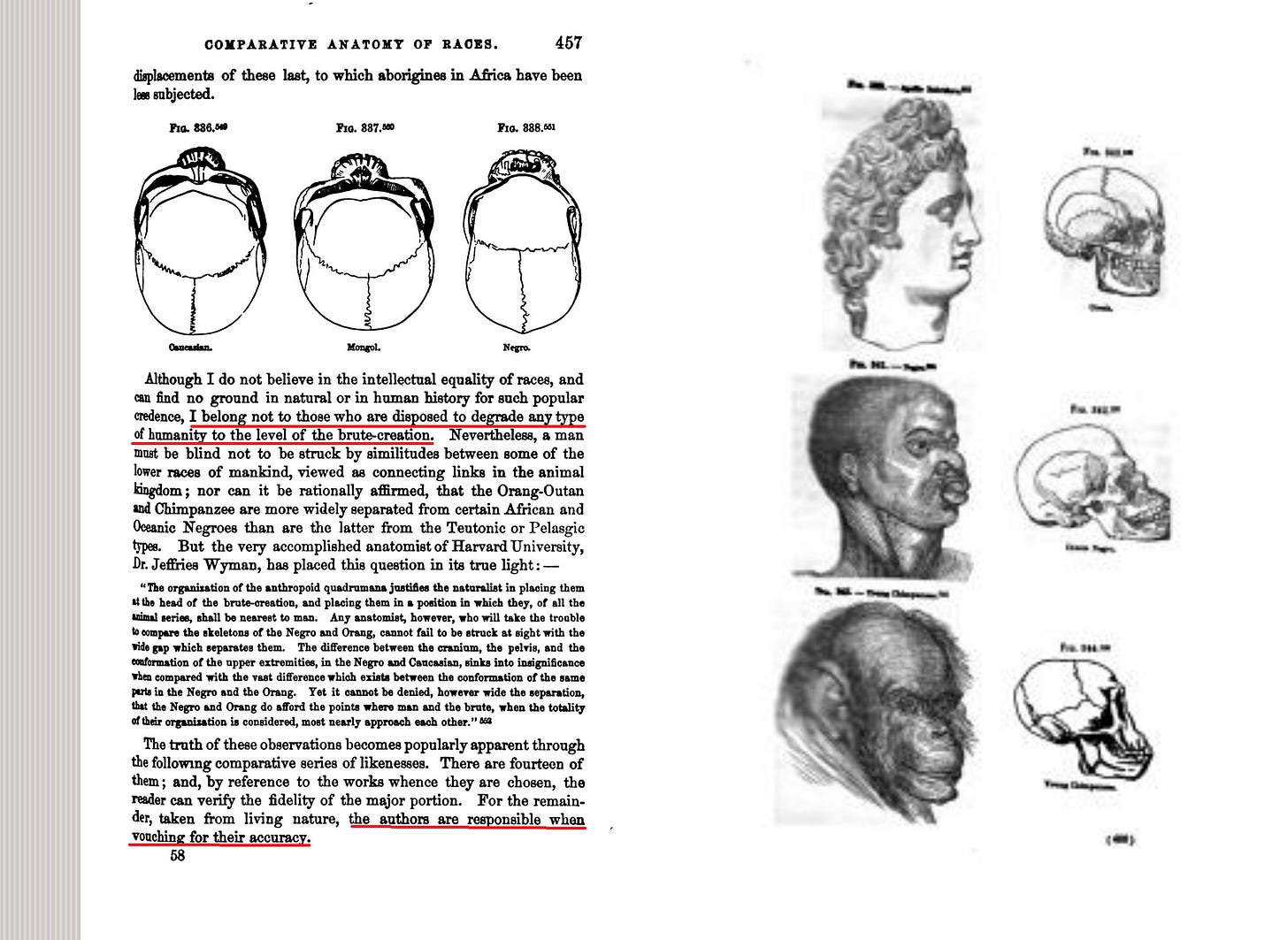
On the next page he states thus, “It will doubtless be objected by some that extreme examples are here selected; and this is candidly admitted" (p. 460) Bold mine. Unexpectedly, it continues with a rebuttal about human origins not being known because of its vast history and undeniable inter-mixture. In few words, this book does not teach that apes and African’s are synonymous, it actually lauds ancient Egyptians, has a gradation of value for all people types, yes, it is crude when speaking about “lower” peoples and does presuppose white dominance, but it doesn’t say black people are apes.

Evolution of Life (Idea that all men come from different primate types)
Even with the proliferation of prejudiced ideas a firm point of view linking only African peoples to apes or monkey’s wasn’t the rule, in fact, numerous scholars across Europe and America claimed all men to have descended from different types of primates.
While simply looking at the above plate it is easy to assume that Chapman positioned Africans closer to apes, but in actuality, what he said about humanity was this, "We conclude, from the general theory of the Evolution of Life, from the facts brought forward in this chapter ... that the remote progenitor of man was an ape, resembling the Gorilla and Chimpanzee". 8 (p. 180) Bold mine. Earlier in this text he confesses that even the most civilized men hold bestial traits when they act poorly due to base origins.
6: Darwinian missing links (not inherently racist but were eventually used for racist spectrum’s of humanity)
When it comes to depictions of missing links, Darwins common descent didn’t racially profile, instead, it assumed all humanity arrived from ape like ancestors but that men who resembled primates were likely less evolved. It wasn’t until this idea was later racialized that dehumanization was linked to inferior breeds of man vis-à-vis a corruption of the great chain of being notion. During Darwins lifetime he was drawn as half monkey numerous times, and missing links were drawn as white Europeans in Victorian attire demonstrating not shame but indifference to use of the concept. If this idea were strictly racist, Caucasian people would not have been shown so often as such (unless always satire).
Missing links were not only displayed as black people, but any persons with resemblances to these dremt up beings, those who held a lower social order were equally targeted. But, african people with birth defects or pronounced features were favoured due to their, “ease of presumed likeness”.
Few know this, but during the same period the Irish were also depicted as ape like because of their diminished status. There are entire articles about this as can be read here. What this illustration shows though is that missing link ape-being as African was not strictly, nor necessarily the case.
7: Apes in human costume for Circus/Zoo exhibitions
Monkey’s in human clothing were another sight at fairs and Circuses. This concept alone could have easily been the basis for BAYC art.

8: Tribal Africans as relatives or peers to monkeys in illustration or cartoons (obviously racist)
Enough examples of racist cartoons in early American pop culture exist. But in these depictions the tribal peoples are often distinguished from the monkeys and other exotic wildlife. The people in these cartoons are not apes, but primitives, and their “ignorance” is what causes humour. I am not saying they weren’t made to look like monkey imitators, but that their humanity was at least presupposed.
9: Ape likeness as slander against political foe (Prussia/Germany as Ape)
Contrary to popular belief, there exists a history of depicting Prussia/Germany and Hitler per se as ape like creatures, this being from their lack of control and assault on human rights or freedom. People of our time have a vantage were modern propaganda automatically meshes with the past, but this isn’t so. The past had its own ways of communicating, and the following images will depict as much.

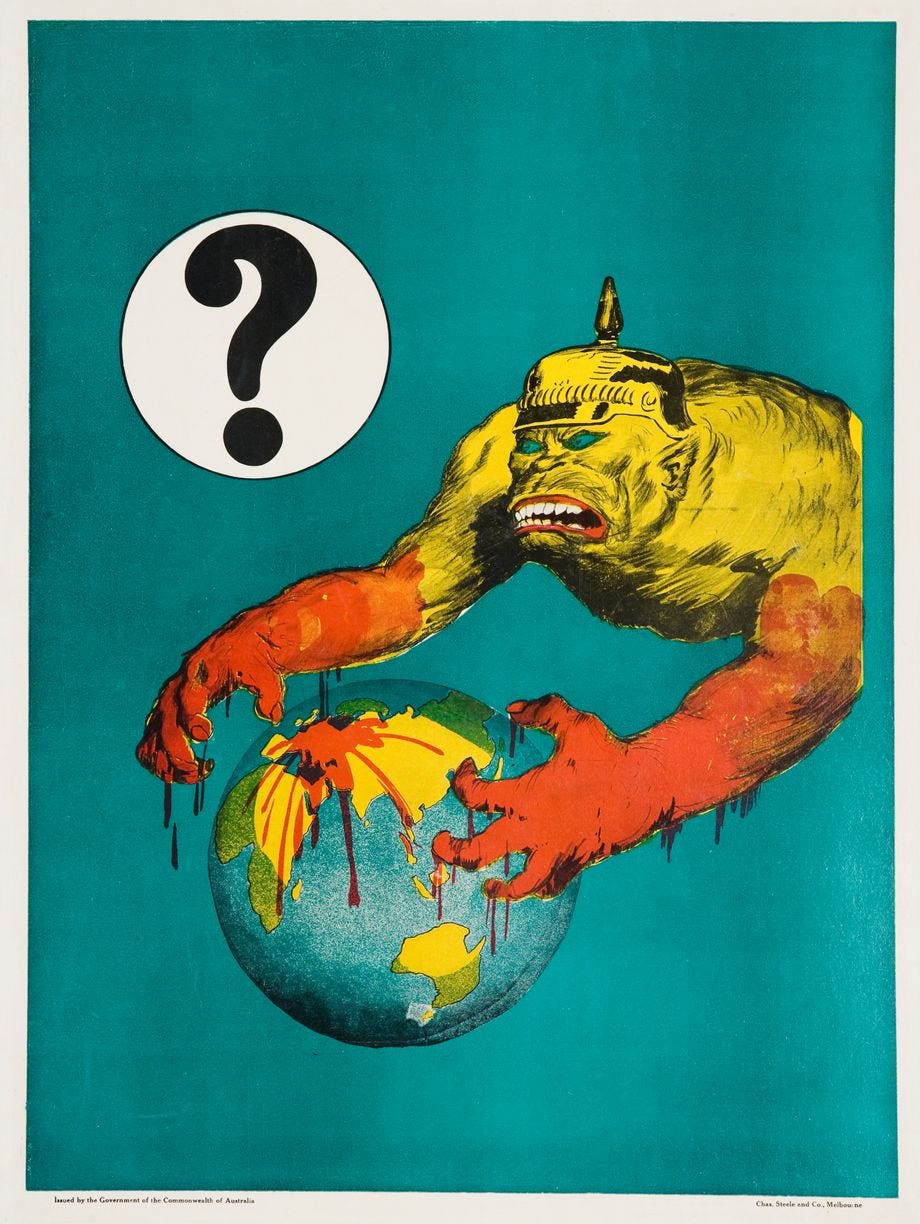

10: Ape likeness given to Prussian/German Enemies
“Nazi propaganda posters frequently used the image of a monster to represent nationalities, ideologies, or ethnicities that were considered outside the narrow bounds of acceptability in the totalitarian regime. ... One of the most over-reaching characteristics of these depictions is the propagandists’ tendency to conflate unrelated or only scarcely related groups into a single form; composite monsters were often used to represent and vilify multiple groups.” 9
As you can see, the depiction of Ape as enemy is an equal opportunity insult. To demand it only has an African/Jewish/Asian application is not only a racist, but a historically naive assertion.
11: Ape beings as aliens or monsters in film: King Kong, Planet of the apes, Harry and the Hendersons &c.,)
It’s interesting to note that in the film series, Planet of the apes different species of primate represent alternate racial groups. This notion is more like what was traditionally thought. So, through this film a circle is completed which - in not so many words - says that African people are not the only signifier for comparative ape directed racism.
Conclusion
We have seen how the original BAYC artwork was likely not created with racial intent by its Chinese America creator. We have also seen that there are at least 9 out of 11 categories of Ape-as-human depictions from all across history and world culture that do not rely upon singularly racist subtexts, this meaning that even if an idea seems racist to you it could easily be proven or feigned otherwise. People remaining in the camp suggesting that an accumulation of similar evidences show mal intent will unfortunately have to prove beyond a reasonable doubt that racist trolling was intended. Most of this information was found by reading primary sources. I restate, If racism does exist it will have to be located in the apes attributes/attire/accessories.
I’m not done
In the next article I will share that Yuga Labs did indeed know about Kali Yuga well before they likely choose a Zelda bosses name. I know that they’ve revealed knowing about this through Goner but there’s interesting evidence surrounding it still. I will also prove that the Totenkopf did have a prior design with a ribbed edge (which many journalists have claimed doesn’t exist, but it does). I will also show that gold teeth, severed hands, the meaning of “Gordon Gonor”, leopard print skins etc,. each have alternate explanations that may change the popularly received narrative.
https://www.scientificamerican.com/article/mysteries-of-ancient-egypts-sacred-baboons-revealed/
https://journeytothewestresearch.com/2020/03/21/the-monkey-king-temples-of-fujian/
Britannica, The Editors of Encyclopaedia. "singerie". Encyclopedia Britannica, Invalid Date, https://www.britannica.com/art/singerie. Accessed 26 June 2022.
https://blogs.getty.edu/iris/physiognomy-the-beautiful-pseudoscience/
https://wellcomecollection.org/works/mdyvazns/items?canvas=9
https://history.princeton.edu/about/publications/history-white-people
https://archive.org/details/typesmankindore00pattgoog/page/457/mode/2up?ref=ol
https://archive.org/details/b21497060/page/180/mode/2up?view=theater
https://brill.com/view/book/edcoll/9789401204811/B9789401204811-s007.xml



